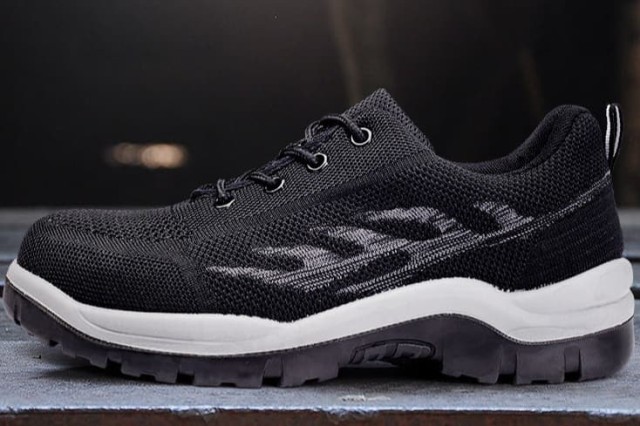Navigating footwear standards shouldn't feel like deciphering hieroglyphics. Whether you're a safety manager, procurement specialist, or business owner, understanding the critical differences between EN ISO 20347 (work shoes) and EN ISO 20345 (safety shoes) ensures compliance while protecting your team from preventable injuries.
Understanding EN ISO Footwear Classifications
Work Shoes (EN ISO 20347): Where "OB" to "O3" Succeed and Fall Short
Work shoes under EN ISO 20347 cater to low-risk environments where toe protection isn't legally mandated. These prioritize comfort and basic hazard resistance:
- OB (Basic): Slip-resistant soles, antistatic properties
- O1: Adds heel energy absorption
- O2: Includes water penetration resistance
- O3: Covers oil/fuel resistance and outsole durability
Why this matters: Healthcare workers or hotel staff might opt for O2-rated shoes for spills, while warehouse personnel could need O3’s oil resistance. But these won’t protect against falling tools or exposed nails—a critical gap in construction or manufacturing.
Safety Shoes (EN ISO 20345): How "SB" to "S5" Address Critical Hazards
Safety shoes (EN ISO 20345) are non-negotiable where mechanical risks exist. Key categories escalate protection:
- SB (Basic): Toe cap (200J impact resistance), antistatic
- S1: Adds heel absorption and fuel/oil resistance
- S3: Puncture-resistant midsoles (metallic/non-metallic) and water penetration resistance
- S5: Includes SRC slip resistance and extended outsole durability
Real-world insight: A food processing plant might use S1 for wet floors, while an S3 with PS-rated midsoles (tested against 3mm sharp objects) suits recycling facilities with debris hazards.
Decoding Workplace Risks and Compliance
Impact/Puncture Hazards: When Safety Shoes Become Legally Mandatory
OSHA’s 29 CFR 1910.136 mandates safety footwear in environments with:
- Falling objects (e.g., construction)
- Sharp ground protrusions (e.g., metal fabrication)
Compliance note: While OSHA references ASTM standards (not EN ISO), EN ISO 20345’s S1-S5 ratings typically meet or exceed ASTM 2413-18 requirements for toe protection and impact resistance.
Slips, Chemicals, and Weather: Hidden Risks in "Low-Risk" Environments
Even "safe" workplaces harbor overlooked dangers:
- Hospital corridors: O1/O2 shoes prevent slips from sanitized floors
- Outdoor maintenance: S3’s waterproofing guards against trench foot
- Labs: S1’s antistatic properties prevent sparking near flammables
Cost of oversight: A single slip injury can incur ~$30,000 in direct costs (medical + compensation), dwarfing the price difference between O2 (~$50) and S3 (~$90) footwear.
Industry-Specific Applications and Case Studies
Construction vs. Healthcare: Contrasting Footwear Requirements
| Industry | Primary Hazards | Recommended Standard |
|---|---|---|
| Construction | Falling tools, rebar punctures | S3 (metallic midsoles) |
| Healthcare | Biohazards, slippery floors | O2 (water + slip resistance) |
| Oil/Gas | Hydrocarbons, heavy loads | S5 (chemical + crush proof) |
Cost of Non-Compliance: Fines, Injuries, and Insurance Implications
- Regulatory fines: OSHA penalties exceed $15,000 per violation
- Worker’s comp: Puncture wounds average 7 lost workdays
- Insurance premiums: Sites with recurrent footwear-related injuries face 10-15% rate hikes
Proactive step: Distributors partnering with manufacturers like 3515 gain access to certified footwear across all EN ISO categories, simplifying bulk procurement while ensuring compliance.
Ready to Equip Your Team with Right-Fit Footwear?
3515’s expertise in EN ISO-compliant work and safety shoes ensures your workforce gets precise protection—without overpaying for unnecessary features. Contact our specialists today to audit your footwear needs against real workplace risks.
Related Products
- Wholesale Customizable Suede Safety Boots - Puncture-Proof with Velcro Closure
- Wholesale Durable Breathable Safety Boots Custom OEM Manufacturer
- Wholesale Suede Chelsea Safety Boots for Custom & Private Label Manufacturing
- Wholesale Leather Safety Boots with Customizable Protective Toe
- Wholesale Durable Safety Boots Manufacturer Customizable Steel Toe Work Boots
Related Articles
- Work Boots vs. Western Boots: How to Choose the Right Footwear for Labor Safety
- Matching Men’s Work Shoe Safety Technologies to Workplace Hazards
- How to Choose Work Boot Materials for Maximum Safety and Durability
- Steel Toe Work Boots: Balancing Safety and Comfort for Demanding Jobs
- How to Extend Work Boot Lifespan: Science-Backed Care for Safety & Savings



















